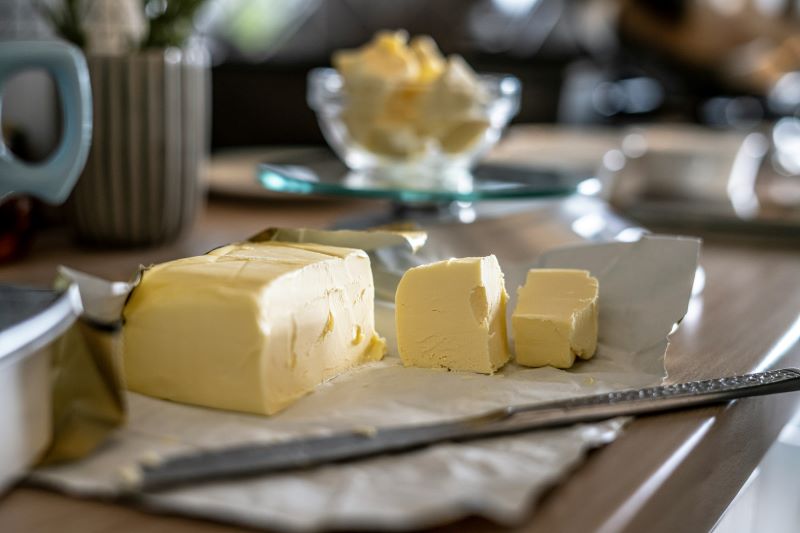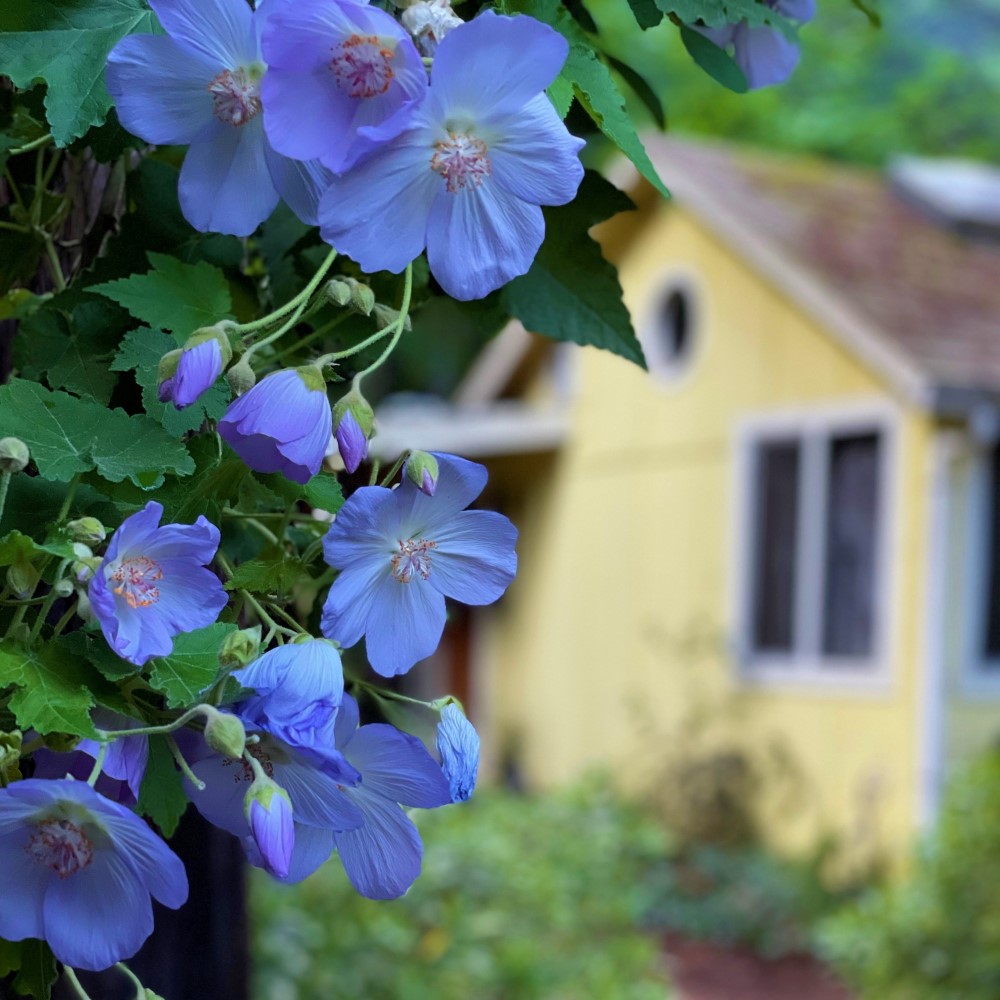
A Better Butter

By Tom Andersen
Fermented butter? Who’d have thought, but yes indeed it is. Nowadays they call it “cultured” butter and it is a premium, but in my grandma’s notebook from 1917 it is called “ripened.” Ripened as opposed to “sweet cream.” She typically cooked and baked with sweet-cream butter because it had a lighter flavor and was usually not salted, but we ate ripened butter as a spread which leads to the adage, “everything’s better with butter.” Butter from a fellow mammal, not something invented in a processed food lab somewhere. I think it was around 1972 or ‘73 when my grandmother came for a visit from the farm in South Dakota and caught my mom feeding us “Oleo” margarine. That did not go over well. The long and the short of it was that grandma believed that we should not be nearly as afraid of foods that are close to nature as we should invented foods.
I’m siding with grandma on this one so to make butter better I’m adding healthy cultures. Regular butter comes from cream. It just sort of appears when cream gets beaten past being whipped cream. The whipped cream turns yellow and clumps up as the liquid (buttermilk) leaks out of it. One simply collects the clumps and washes out the buttermilk and that’s about it.
Back on the farm, butter was made from raw milk; milk that was not pasteurized, although my uncle Leo would have us look out the window at the cows in the “pasture” and say, ”see there, pasteurized now drink up”… I am a believer in that particular raw cream being okay because I knew the cows were well cared for and the milking process and handling were clean. In this case, extra clean as my uncle Albert was also the county’s dairy inspector.
Certainly pasteurization kills off good and bad bacteria, but for our purposes here we are going to introduce live cultures that don’t include salmonella, listeria, or anything else that might make us really, really sick, but instead add some good probiotics and amazing flavors as well.
Cultured butter comes from cream that has been lightly fermented, one or two days max. Raw, unpasteurized cream will “clabber” – become sour and gelatinous – all by itself if left on the counter for a day or so. If pasteurized cream is left out on the counter, it will spoil, a big difference. So, to our pasteurized heavy whipping cream we add an active culture like a couple tablespoons of store bought or homemade buttermilk, milk kefir, or plain yogurt with active cultures to get it to ferment instead of spoil. I like using buttermilk because I can use the remainder for bread or pancakes.
Cultured butter is most definitely a treat and because of the added healthy cultures, it is probably the only kind many of us should be eating. Buying butter may be cheaper unless you have a cow, but then you get what you get. But, the tangy and very buttery flavor and unctuous feel of cultured butter brings us ole timers back to our youth. For the rest of you, it will be transformational. Put it on a hot fat slice of my friend Brenda’s homemade whole wheat sourdough or Alison Steele’s famous cornbread, and it could make a regular sweet-cream butter lover cry.
Pretty much any cream except powdered (I tried it, but no luck) will work. Low-temperature pasteurized works best, followed by regular and ultra-pasteurized.

Cultured Butter Recipe
If you look around and find pasteurized organic grass-fed heavy cream, you won’t be sorry, but regular ultra-pasteurized heavy whipping cream from the grocery store will also be outstanding. Let’s start off with a pint of heavy whipping cream. Pour that cream into a very clean, sanitized one-quart jar. Into that jar add two tablespoons of cultured buttermilk, or milk kefir, or plain yogurt with active cultures. If you use yogurt, put it in the oven with the light or pilot light on. Otherwise cover it and set it on the counter (low 70s F) for about eight hours. Check it. It should smell a little sour, taste a little sour, and be a little thicker. How sour is up to you. Some people like really tangy butter and let it ferment for a couple days.
Now that you have something tangy to work with there are a few options for churning. One, shaking a jar half full works great if you want to keep the kids busy for a while and can keep them motivated. Two, either an electric hand mixer or stand mixer. This, by far, is the easiest. Three, an old fashioned butter churn. Either the plunger or the crank and paddle kind were the way forever and yes, they are still out there. Wish I had one. And I guess you could hand whisk.
I’m using the stand mixer. Call me lazy. First, cool the cream down into the low 60s F then using the whisk start mixing. Spin it as fast as you can without flinging it all over the place. Keep a spatula handy. As it becomes whipped cream and beyond you’ll need to push it back into the bottom. Keep adjusting the speed. You’ll know what I mean. Seemingly all of a sudden it will start turning yellow and leak water, buttermilk actually. Keep up the churning until there is mostly one big clump. Using a fine strainer or cheesecloth in another bowl, strain off the buttermilk. Wash your hands, grab up that butter and squeeze it like playing with playdough. Put it in a bowl with cold water and knead it a few times then pour off the murky water. Keep doing this until the water is clear. All the buttermilk must be washed out or it will spoil quickly. If you want to salt it, add just a pinch or two and work it in. Shape and divide it into sticks. You’ll probably end up with two. Wrap them tightly in wax paper or plastic. Save that buttermilk. It has live cultures in it and can be used to make your next batch. Finally, go bake a potato or make some biscuits and pour yourself a Belgian witbier, hefeweizen, or American wheat ale — any of which would go perfectly with your better butter.

Tom Andersen is a writer, cook, martial arts instructor and lifelong Felton resident. He explores the world of fermented food and drinks in print and online at FB @FeltonFementer.
Featured photo: George Sorin
***
Have a story to share? The San Lorenzo Valley Post welcomes your Santa Cruz Mountains news, story ideas, photos, and letters. Send us an email.
Sign up for our newsletter to stay connected to news and events in the Santa Cruz Mountains.









